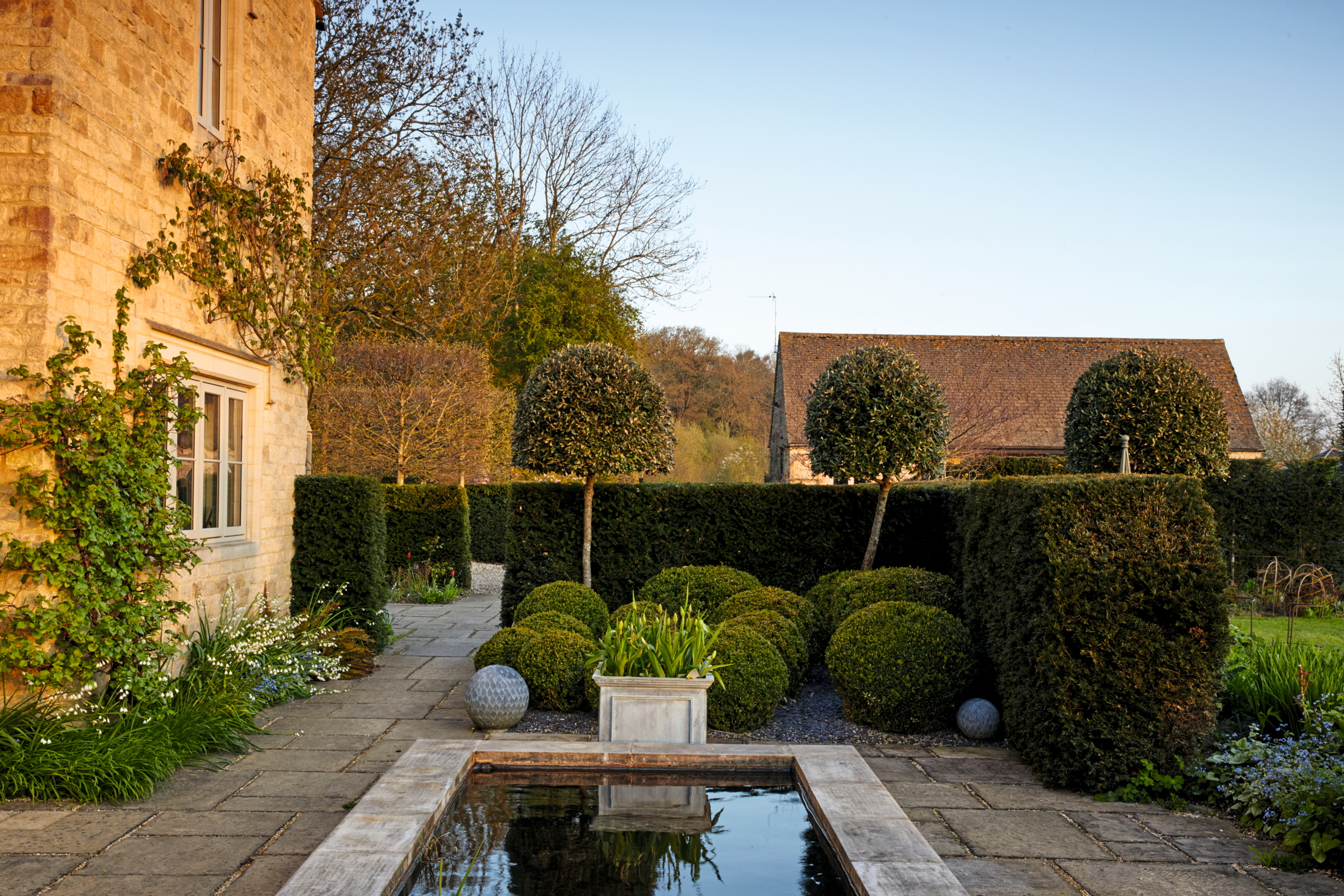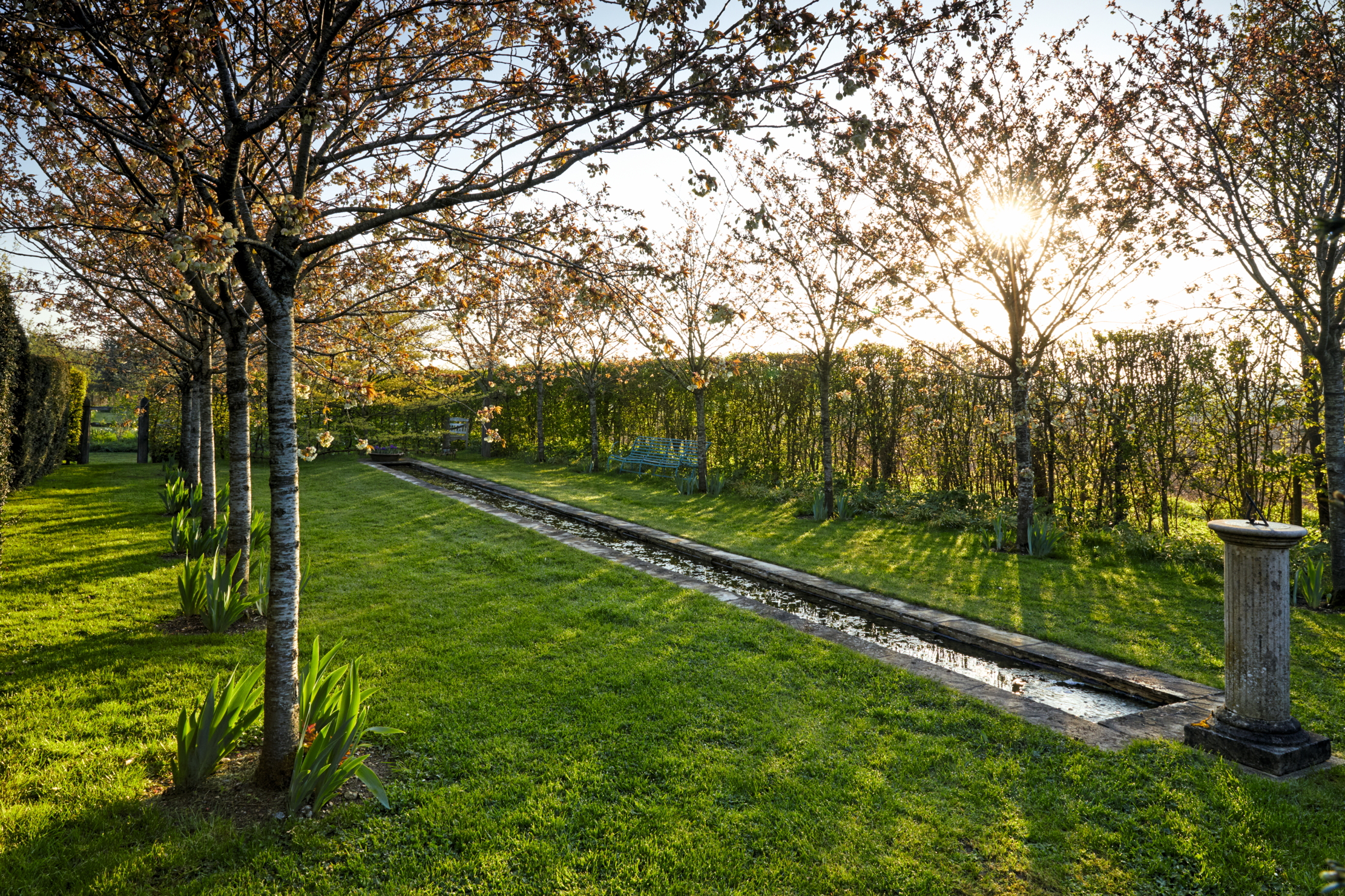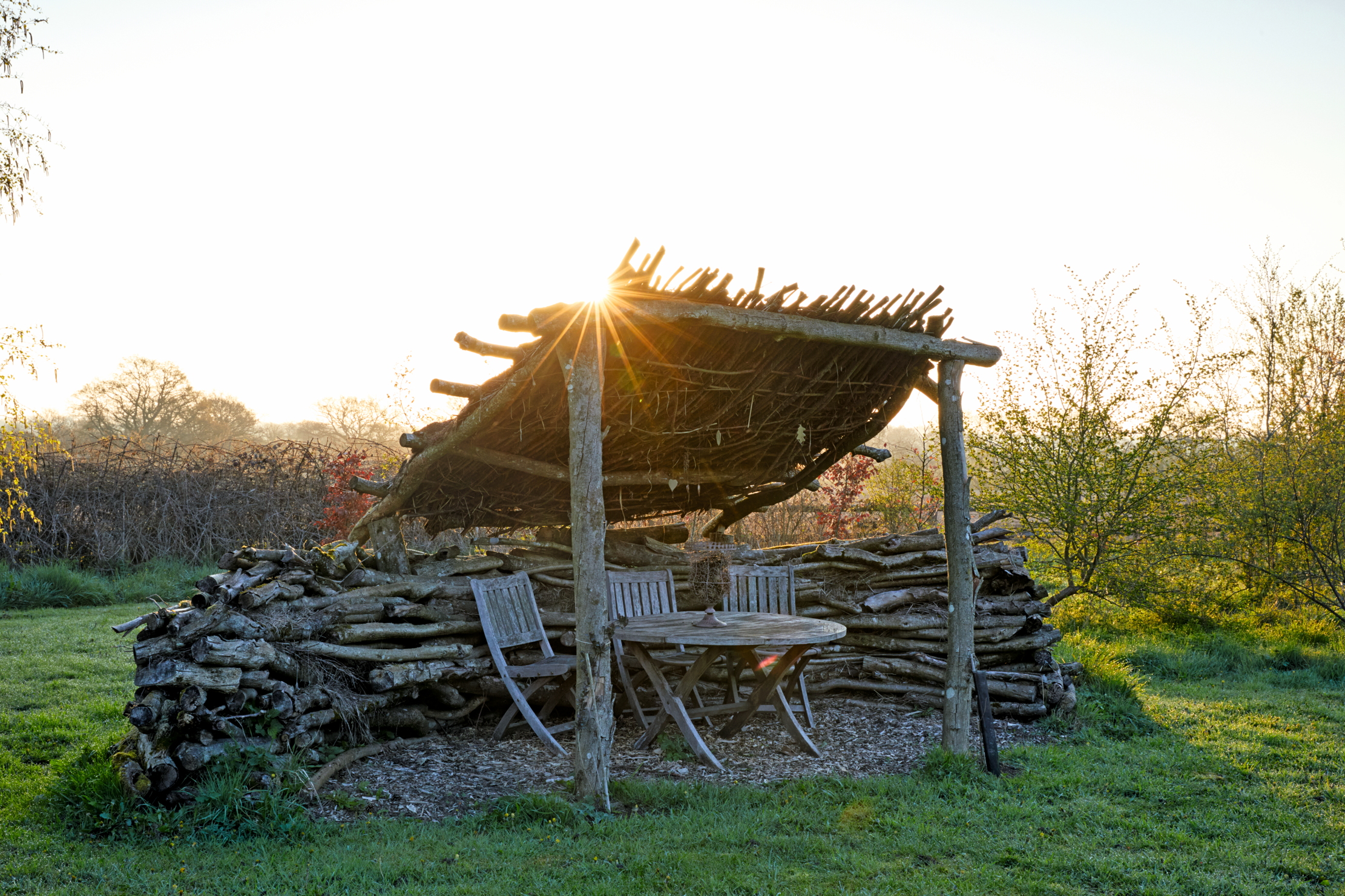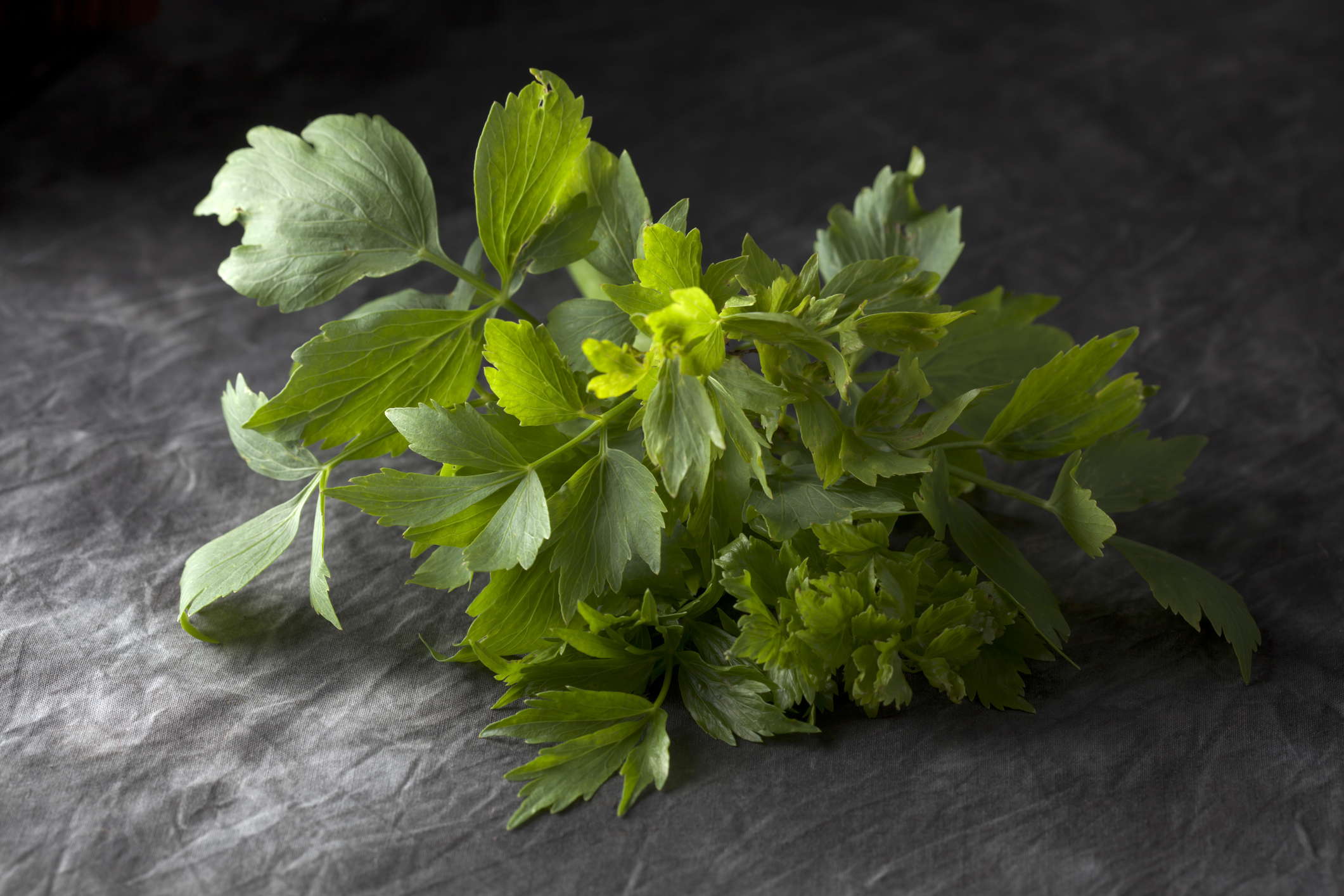How to make a garden good enough for Country Life from scratch
Within only 14 years, seven acres of featureless grass around Charlton Farm in Wiltshire have been transformed into a garden full of incident and charm, writes Caroline Donald

Editor's note: the following article contains references to suicide
If ever there were a blank canvas, it was the landscape around Charlton Farm in north Wiltshire that Sarah Rivett-Carnac, her husband Simon, and their two young sons inherited when they moved there in 2010. Surrounding the new-build house were seven acres of grass with not a feature on them, save for two ash trees and an oak on the hedgeless boundary. Once part of the nearby Charlton Park estate, the land had been sold off between the wars and had housed a chicken farm for more than 15 years. It was then bought by the previous owners, who built a speculative house that went on the market the week of the 2008 crash and consequently stood empty for two years.
However, Mrs Rivett-Carnac, an artist and ceramicist, relished the challenge of making a garden from scratch. She also has the advantage of the horticultural acuity to achieve it, having started aged three by with a trough of alpine plants in her native Scotland (she is still keen on ‘little things in pots’), moving on to acquiring a collection of pelargoniums at boarding school and creating a wild garden around her cottage in Perthshire. That love for plants and their creative potential has never left her.

Fourteen years on at Charlton Farm, the picture is very different: one of woodland walks, mounds and dips, winding paths and vistas, sculptures, ponds both wild and formal, a fruit orchard and connecting areas. These allow Mrs Rivett-Carnac to experiment with different planting styles, microclimates and themes, with the help of her gardeners — first Jemma Russell, now Eppie Workman, plus the invaluable Steve Ponting, who has built all the fruit cages and does the maintenance.
‘I have the ideas and then we discuss it as a team how to achieve them,’ says Mrs Rivett-Carnac. Encouraging wildlife is a priority and in places she adopts a laissez-faire attitude to self-seeders: ‘I am very tolerant. I like things growing out madly together; I don’t mind if they are a bit of a thug.’ The wilder elements are counterpointed by tightly topiarised box, yew and Quercus ilex to provide formal punctuation marks within areas hedged with yew and hornbeam.

Mrs Rivett-Carnac freely admits the influence of others on her own style and tastes: ‘My mother was a fantastic gardener and, because I was the youngest child, we would go to lots and lots of gardens together.’ She points out the path lined with grasses, as a tribute to Piet Oudolf; the Cortensteel raised pond and planters, in homage to Tom Stuart-Smith; and attributes her hornbeam Daleks to Arne Maynard. These days, she and her friend Sarah Biddulph of Rodmarton Manor in Gloucestershire run The Generous Gardener, arranging lecture days with leading figures in the gardening world they admire, so she is still picking up ideas along the way.
There was never any masterplan, although she did draw up a layout for the areas near the house, such as the herb garden and large lawned area, edged with herbaceous borders. ‘I am very ramshackle, as I am not trained. I simply give it a go and see what works,’ she says, perhaps doing herself down in this garden of many moods and moments.
Exquisite houses, the beauty of Nature, and how to get the most from your life, straight to your inbox.
Some areas took their time to develop: for example, the grass tennis court created for her husband, a keen sportsman, was always flooding, so now there is a round, reflective pond there and the sogginess has been sorted by creating a new wildlife pond beyond, into which the water from much of the garden drains. A mound next to it, made from the spoil that was dug out, is an excellent place for good mobile-phone reception, as well as viewing the garden.

There are several other areas of water, capturing the big Wiltshire skies. ‘From an artistic point of view, I like the reflections,’ says Mrs Rivett-Carnac. ‘There are nine watery areas, so I am going to be hopeless when I am a grandmother, worrying about where the children are. I will have to tie them down.’
A potential attraction for future grand-children to explore is the woodland, along the side of which runs a boggy area. ‘The ground is very bad here. When we took the earth from it to make another mound, it simply filled up with water, so I thought, let’s make a bog garden.’ In spring, the woodland is filled with snowdrops, then fritillaries and candelabra primulas and the bog is edged with the brightly coloured stems of salix and dogwood.
The four-acre wood was planted in 2016 as part of a scheme with the Woodland Trust. ‘They provide the trees and hedge plants, you pay some of the cost and then you have to plant them yourselves.’ The trees are growing well and one wanders along winding grassy paths past willow, alder, beech, poplars, birch and lime. As a nod to her native country, Mrs Rivett-Carnac later planted some Scots pine and the area is filled with the sound of birdsong. It was hard work, but at least she has a proper boundary now, too: ‘I think we planted 900 whips in the hedgerow.’

It has been a tough few years for the family, as Simon Rivett-Carnac took his own life in 2019, aged 53. Mrs Rivett-Carnac has since applied herself with a gusto equal to that she shows in the garden by setting up The Simon Rivett-Carnac Trust, which raises money to give to groups that work in the area of mental health. She also holds regular plant sales at Charlton Farm for the charity.
Mrs Rivett-Carnac knows the therapeutic powers of being outdoors. ‘Gardening is great exercise and good for your mind. It is about doing stuff. I am lucky in that I am one of those people who generally get up in the morning, goes outside and is immediately drawn into the garden and what to do next. Getting on with it is what has pulled me through.’
Plant sales at Charlton Farm, Wiltshire, will be held on May 17 and September 6

Six of the finest gardens in Britain, but only one can be the winner
The Historic Houses Garden of the Year competition is once again underway — we take a quick glance at the

How to grow lovage — and the reasons why you'd want to bother
Our grow-your-own expert Mark Diacono takes a look at the lovely uses for lovage.

Five of the most amazing mazes according to a man who makes them
Adrian Fisher is a world-famous maze designer. The man behind the Saltburn maze tells us about some of his favourites.

Riding to the rescue – how the gardens at Dowdeswell Court have been brought to life
With only lawns and shrubberies remaining of the original gardens, their rejuvenation has taken a huge amount of thought and